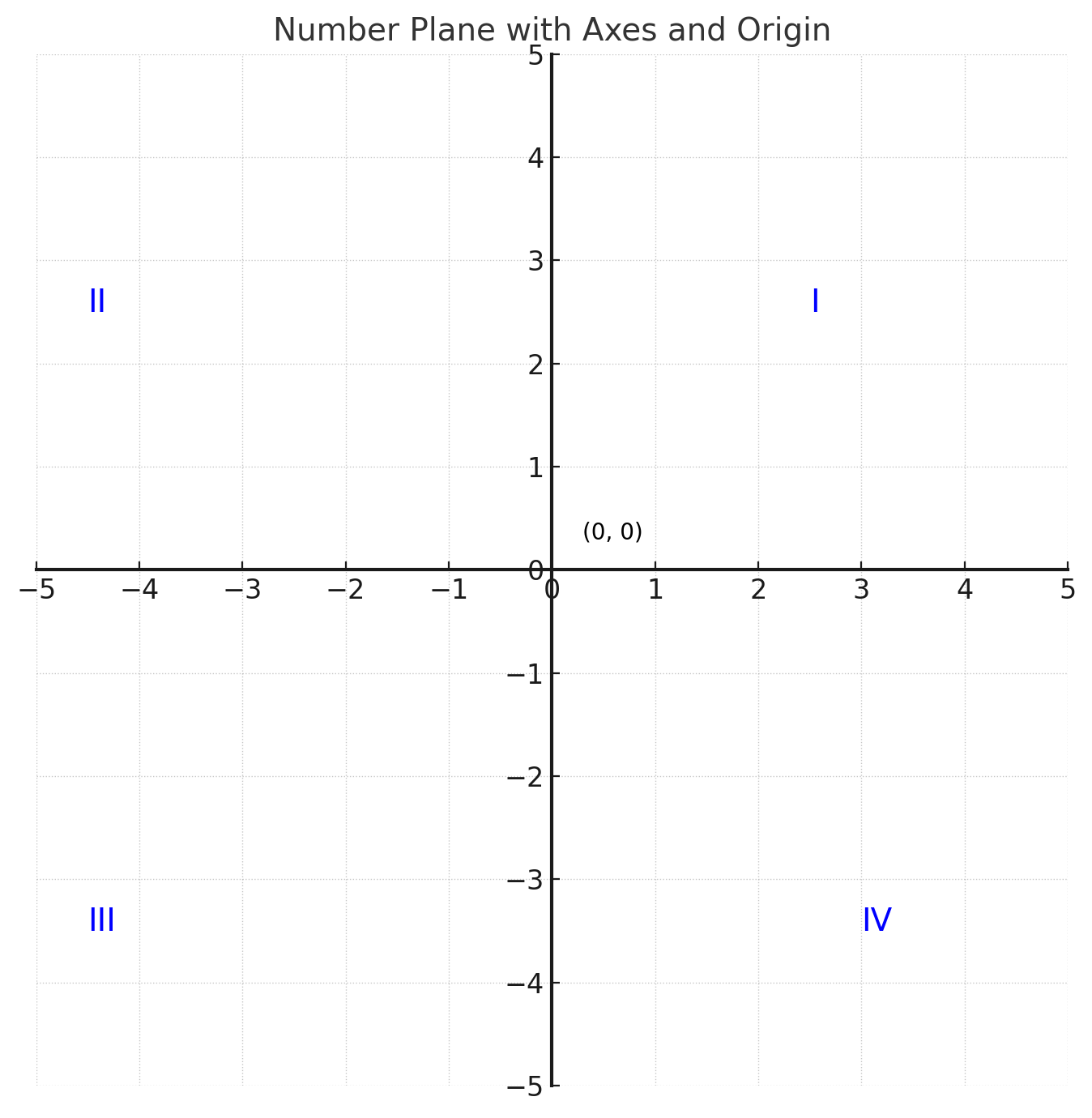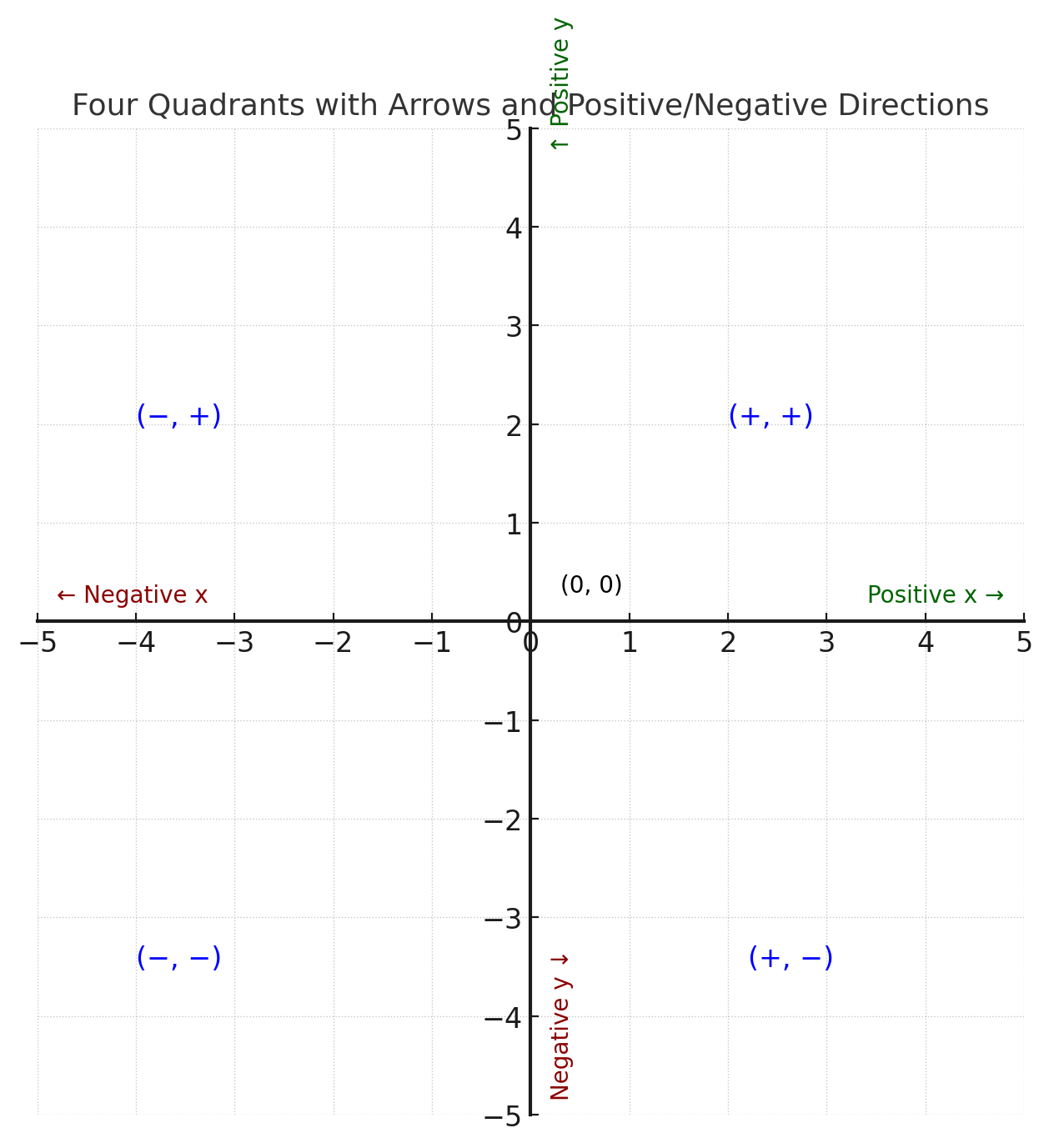Shopping cart
Hello There!
Welcome to GattPrep, your Guide for Life and Learning
Have you ever played a game where you had to locate treasure using a map grid? That’s exactly what coordinates help us do in mathematics — find exact positions on a number plane.
In this lesson, we’ll explore how to:
Let’s dive in and discover how to become a coordinate pro!
The number plane (or Cartesian plane) is a flat surface where we can locate points using two number lines:
The point where the x-axis and y-axis cross is called the origin, which is written as (0, 0).

Each point on the plane is written as an ordered pair (x, y). The first value (x) tells you how far to move left or right, and the second value (y) tells you how far to move up or down.
| Point | Interpretation |
|---|---|
| (3, 2) | 3 units right, 2 units up |
| (−4, 1) | 4 units left, 1 unit up |
| (−2, −3) | 2 units left, 3 units down |
| (5, −2) | 5 units right, 2 units down |
The plane is divided into four quadrants:
Tip: Think of it like turning a clockwise wheel starting from the top right.

To plot a point like (−3, 4):
Once you plot several points, you can join them to form lines or shapes. Graphs help you visualize relationships between values.
Example 1: Line Graph
Plot the points A(0, 0), B(1, 2), C(2, 4), and D(3, 6). Connect them in order.
You’ll see a straight line going upward. This shows that as x increases, y also increases (a positive relationship).

Example 2: Closed Shape
Plot and connect points: A(1, 1), B(1, 4), C(4, 4), D(4, 1), and back to A.
You’ll get a rectangle!

Example 3: What shape is formed by joining the points (−2, −1), (−2, 2), (1, 2), (1, −1)?
Example 4: Draw a triangle with vertices at (0, 0), (3, 0), and (3, 4). Find the area of the triangle.
This triangle is right-angled. Use the formula for area of a triangle:
Base = 3 units, Height = 4 units. So:
Why do you think we use coordinate planes in math, science, and even games? Can you think of an activity in your daily life that could use coordinates?